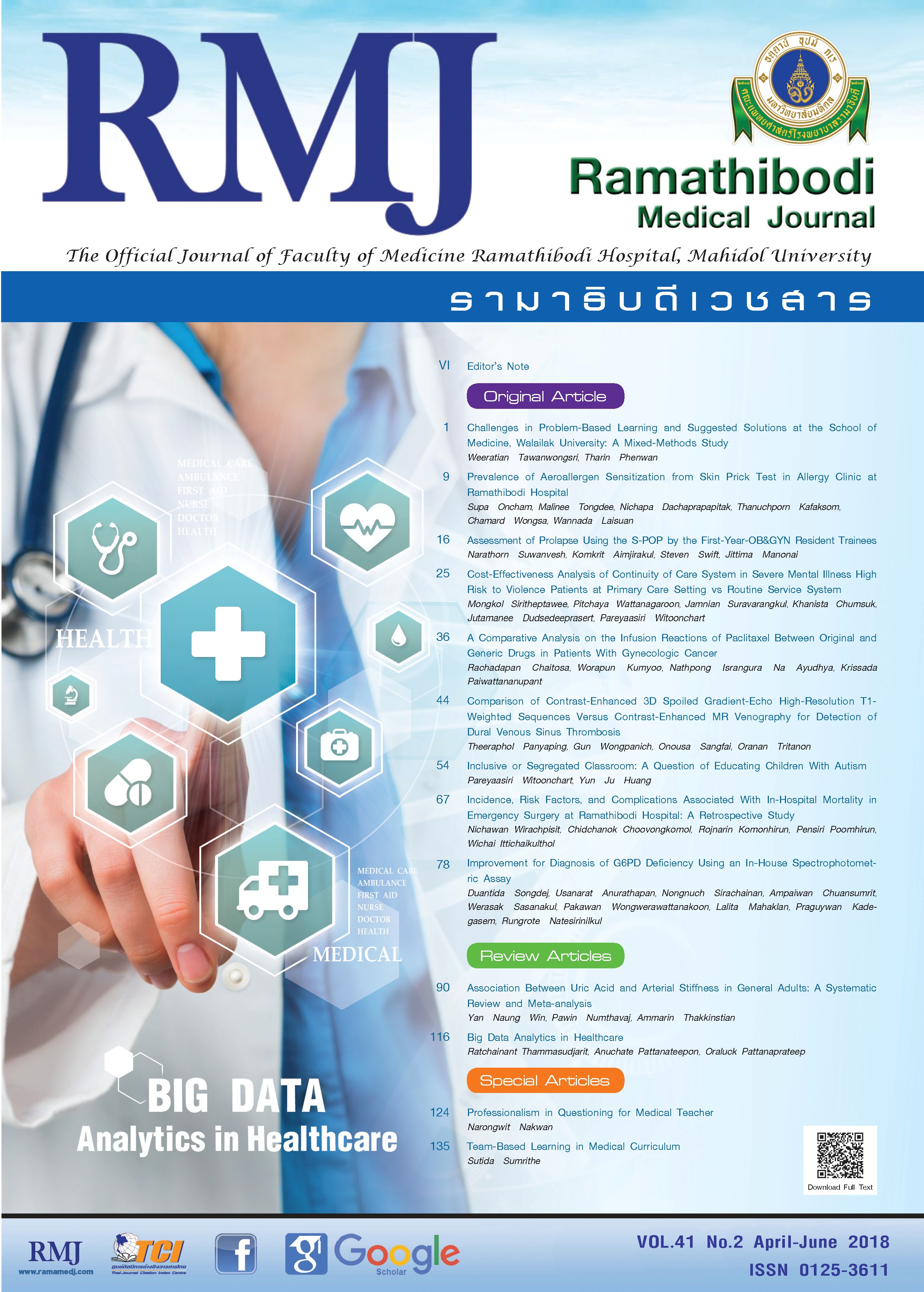Professionalism in Questioning for Medical Teacher
Main Article Content
Abstract
According to learning process, questioning with well-crafted question is a crucial teaching tool for medical education because these methods lead medical student targeting to learning outcomes in all modality of teaching class. Currently, active learning class plays a major role in medical school because learners have to participate to other learners or teacher, that helps them express or generate thinking ideas independently. Beside questioning and question occurring in the class helps teachers evaluating knowledge and comprehension, those questions should promote good thinking and challenge learners to think beyond what they know and understand. The good questions have to assess higher-ordered cognitive knowledge that reflects critical thinking of learners. Bloom’s taxonomy, a classification of levels of intellectual behavior, supports teachers to develop challenging questions and increasing complex thinking of medical students.
Article Details
References
Armbruster P, Patel M, Johnson E, Weiss M. Active learning and student-centered pedagogy improve student attitudes and performance in introductory biology. CBE Life Sci Educ. 2009;8(3):203-213. doi:10.1187/cbe.09-03-0025.
Gentry L. Teaching with questions. Proc (Bayl Univ Med Cent). 2015;28(1):118-119.
Paul R, Elder L. The Art of Socratic Questioning. Tomales, CA: Foundation for Critical Thinking; 2006.
Oh RC. The socratic method in medicine-the labor of delivering medical truths. Fam Med. 2005;37(8):537-539.
Cho YH, Lee SY, Jeong DW, et al. Analysis of questioning technique during classes in medical education. BMC Med Educ. 2012;12:39. doi:10.1186/1472-6920-12-39.
Tofade T, Elsner J, Haines ST. Best practice strategies for effective use of questions as a teaching tool. Am J Pharm Educ. 2013;77(7):155. doi:10.5688/ajpe777155.
Bloom BS. Engelhart MD, Furst EJ, Hill WH, Krathwohl DR. Taxonomy of educational objectives: the classification of educational goals. Handbook I: Cognitive Domain. New York: David Mckay; 1956.
Anderson LW, Krathwohl DR, Airasian PW, et al. A Taxonomy for Learning, Teaching, and Assessing: a Revision of Bloom’s Taxonomy of Educational Objectives. Abridged Edition. New York: Longman; 2001:302.
Rowe MD. Wait-time and rewards as instructional variables: their influence on language, logic, and fate control; 1972. https://eric.ed.gov/?id=ED061103. Accessed September 2, 2017.
Allain R. How long have to wait for a question to be answered? August 29, 2008. https://www.wired.com/2008/08/how-long-do-you-wait-for-a-question-to-be-answered/. Accessed March 2, 2018.
Cunningham RT. Developing question asking skills. In: Weigand JE, ed. Developing Teacher Competence. Englewood Cliffs, NJ: Prentice Hall; 1971:81-130.




